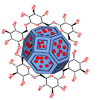
Emphasis - Diagnostic Ultrasound
The emphasis for diagnostic ultrasound is on:
- design, development and construction of transducers, transducer arrays, materials and other hardware
- image acquisition and display methods
- innovative signal processing methods and devices
- optoacoustic and thermoacoustic technology
- image-enhancement devices and methods
- ultrasound contrast agents
- image and data presentation and mapping methods
- functional imaging and image fusion.
- image guided surgery
Emphasis - Interventional Ultrasound
The emphasis for therapeutic ultrasound is on:
- design, development and construction of transducers, transducer arrays and other hardware
- interventional technologies
- adjunct enhancement of non-ultrasound therapy applications
- high-intensity and low-intensity focused ultrasound (HIFU/LIFU)
- hyperthermia applications
- non-invasive or minimally invasive interventional surgical or therapy tools
- ultrasound contrast agents for therapy
- targeted drug delivery
- neuromodulation
- biopsy
- other interventions
Additional areas of support
- examination of parameter space
- machine/deep learning for acquisition and interpretation
- simulation and modelling
Notice of Special Interest in Ultrasound and Optics-based Devices for Trauma Care
Related News
Malignant primary brain tumors are the leading cause of cancer deaths among children and young adults with few therapeutic options. A preclinical study in Pharmaceutics shows that combining focused ultrasound with microbubbles opened the blood brain barrier to deliver immunotherapy into the brain of a large animal model.
A multidisciplinary group of NIH-funded scientists have successfully captured real-time, high-resolution images of the developing mouse placenta during the course of pregnancy. Their technique, which combines a surgically implanted window with a next-generation imaging system, provides key insight into placental development under both healthy and pathological conditions.

Researchers have developed sugar-coated gold nanoparticles to both image and destroy biofilms. In a study, they used the nanoparticles on the teeth and wounded skin of rats and mice, eliminating biofilms in as little as one minute and outperforming common antimicrobials.
NIH announced finalists in its competition to accelerate development of diagnostic and monitoring technologies to improve fetal health outcomes in low-resource settings.
A collaborative team of NIH-funded researchers is developing a way to obtain DNA shed from brain tumors using focused ultrasound. Their first-in-human study could be an important step towards improving the way brain tumors are diagnosed.

